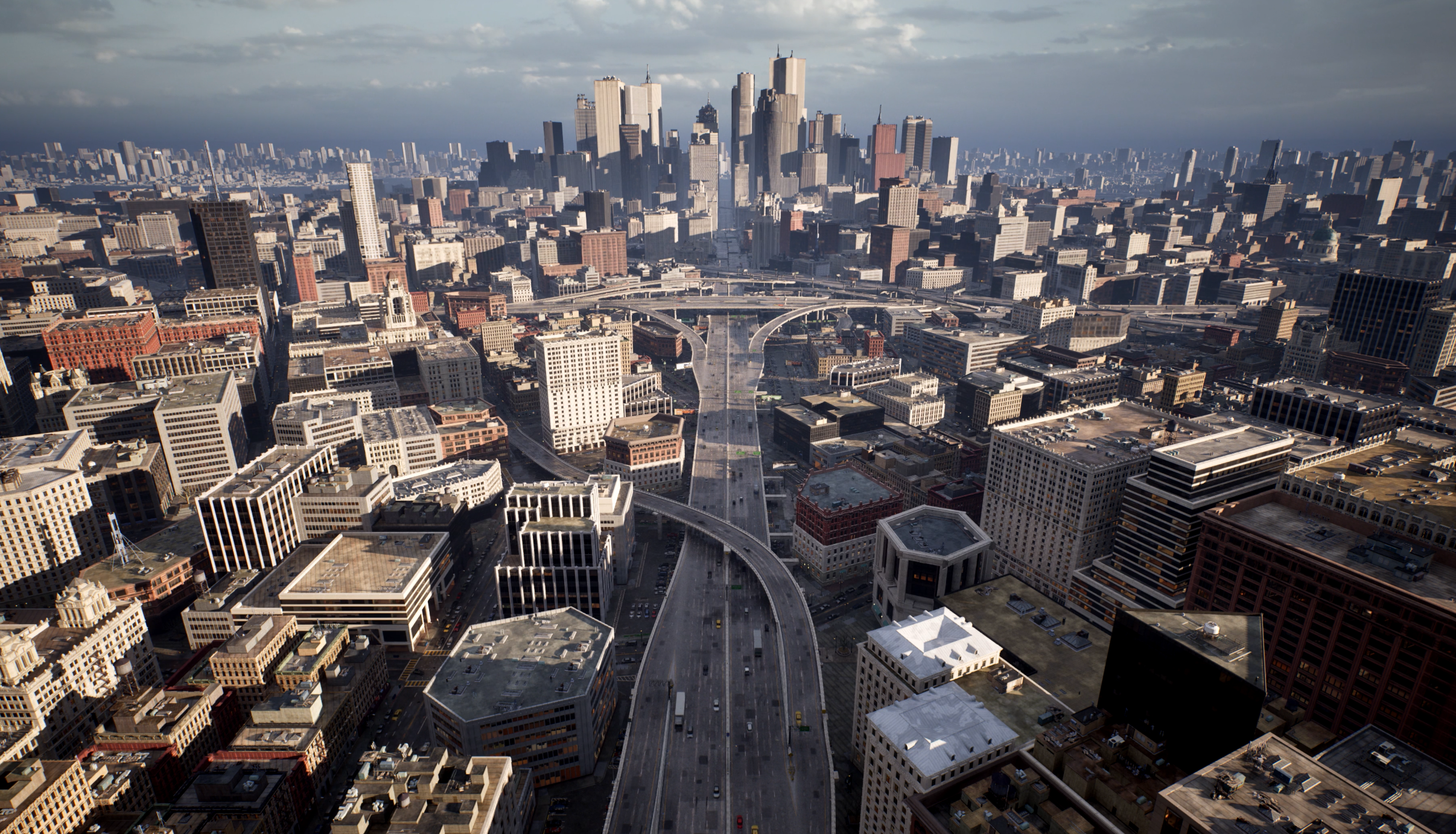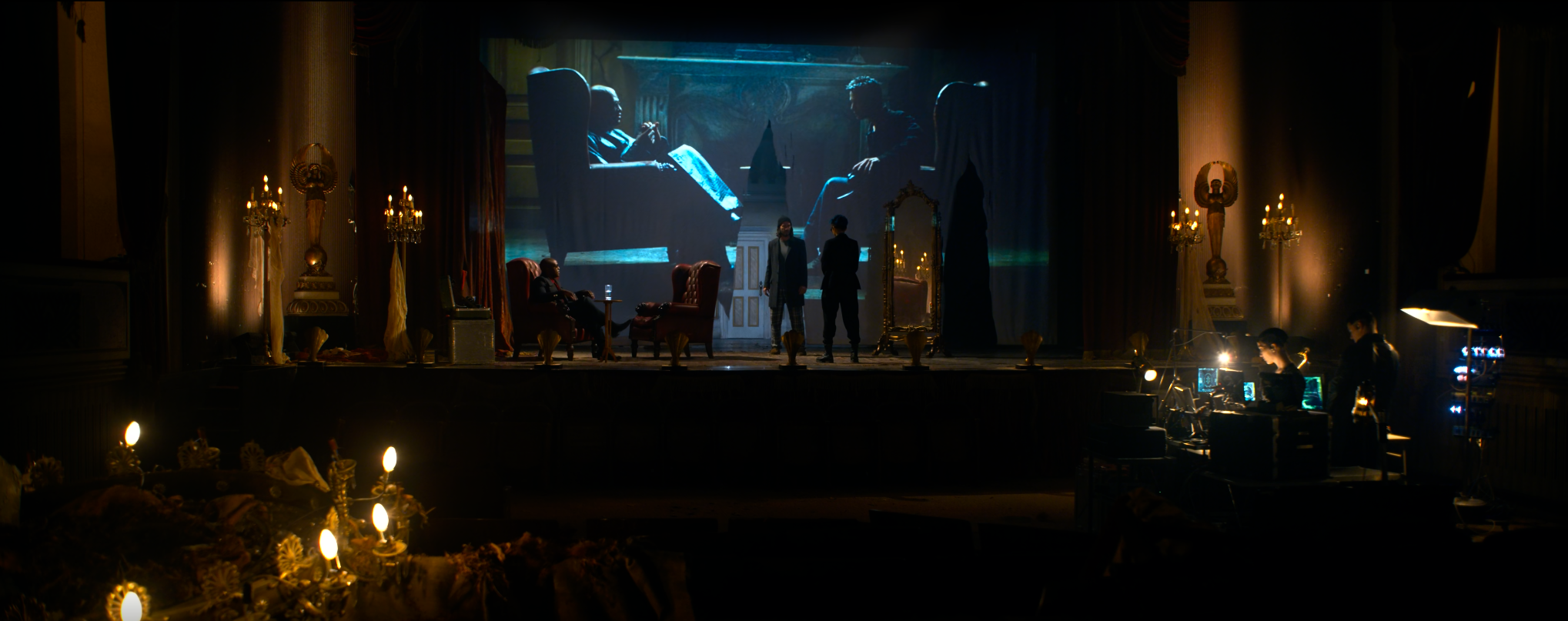It's Time for a New Matrix Video Game
The technology — and techniques — now exist to make it truly possible

Video games are the ultimate Matrix. They are artificial worlds that we willingly enter through the proxy of a controller. They become as good as real thanks to our deliberate suspension of disbelief. The progression of game design and technology in unison has gradually reduced our imagination overhead.
Actually, I think it’s tempting to believe that the rise of new technologies and higher-fidelity graphics is draining our imagination reservoirs. But when I look at a technology like Unreal Engine 5 — especially when combined with high-speed SSDs — I simply see a much, much larger canvas on which to build cool new shit.
Enter the Matrix
Back in the early 2000s, The Matrix sequels launched in tandem with a range of complementary media, which included The Animatrix (a collection of loosely-related short films based in The Matrix universe), three games (Enter the Matrix, The Matrix Online, and The Matrix: Path of Neo), and a range of comic books. While this deluge of content provided sustenance for hungry fans, I’d argue that much of it is unnecessary to appreciate the trilogy (although The Second Renaissance — a pair of shorts from The Animatrix — are probably required viewing to more thoroughly understand the broader story, especially some key aspects of The Matrix Resurrections).
These games gave players a taste of what it might feel like to be Neo inside the Matrix. But they were also understandably poor approximations of the films for two key reasons. First, the hardware technology simply didn’t exist to render a massive, photorealistic world in real-time. And second, game design techniques have evolved dramatically over the last twenty years. The way game designers tell stories — and the way players experience them — has broadened dramatically since early 3D games.
The recent launch of the fourth film (The Matrix Resurrections) alongside a staggeringly realistic in-game technical demonstration (The Matrix Awakens) begs the obvious question: where is our new Matrix video game?
The Game Within the Movie Within the Set Within the Movie Within the Matrix
If you haven’t yet seen The Matrix Resurrections, I won’t spoil it for you here. But I do want to call upon one specific scene, which has already been featured in trailers.

The scene, pictured above, takes the concept of a break in the fourth-wall and wrings it so tightly that it almost defies comprehension. We see characters on a set that mirrors the first film. The torn screen on stage depicts events that took place in that first film (which is itself a video game based on events that occurred in the Matrix). The characters are knowingly re-enacting those events on a stage that exists within a Matrix. That Matrix — the film — exists within one or more Matrices, too: Warner Bros. is the Matrix that gave birth to the film and that governs its rules and operating principles. Our world is the Matrix within which Warner Bros. operates.
To quote Neo: Whoa.
The Matrix Resurrections is more than comfortable smashing through the fourth wall at almost every opportunity. It knows it’s a movie, and it knows you’re watching the movie. It knows you have fond memories of The Matrix. It exploits your nostalgia and then tells you it’s exploiting your nostalgia, only to confidently conclude — with a wry smirk — that you don’t really care. And let’s be honest: you don’t.
One of its boldest — and I think, most enduring — concepts is the idea that the delineation between movie, game, and “real life” are ultimately unimportant concerns because all of our experiences reduce down to a combination of memories and feelings in the end. Remember that moment when you first looked out over Hyrule Field in Breath of the Wild and your heart stirred with possibility? That event and their attendant emotions happened. Are they any less real because they occurred in a video game?
I think there’s a profound opportunity right now to build on the ideas of The Matrix Resurrections in the form of a video game. It would be thematically appropriate, but it would also be technologically plausible.

Behind the Mirror
The Matrix Awakens demonstrates that it’s feasible — really for the first time — to operate a Matrix within your PS5, Xbox Series, or PC. Yes, we’ve seen big open worlds before and several of them have been mighty impressive. But we’ve never seen a simulation of this realism and this magnitude, with the ability to fold the space between macro and micro perspectives within an instant.
There are so many possibilities. For example, in The Matrix Reloaded, we saw ‘backdoors’ for the first time. These are endless hallways full of doors that provide a many-to-many relationship between every conceivable space in the Matrix, provided one has the right key code. In The Matrix Resurrections, however, we’re dealing with a newer version of the Matrix — one where symbolically-important mirrors act as portals between spaces. Step through a full-length mirror with a noir film set on one side, plant your feet on the floor of a high-speed Shinkansen on the other. This concept was only possible in movies prior to the latest-generation game consoles and their break-neck-fast SSDs. Ratchet & Clank: A Rift Apart is a great practical example of the idea, where the player can seamlessly move back-and-forth between completely different worlds without so much as a hiccup. In the film, a rocket soars through the film set, passes through a mirror, and explodes inside the Shinkansen. Imagine the incredible gameplay possibilities around this, where you’re either evading an enemy or chasing a target between spaces that are vastly different but frequently interchangeable.
Instantaneous (and regular) teleportation from locale to locale is cool enough. But The Matrix series has expressed itself as a power fantasy in other ways. Neo can fly, for example. And throughout the trilogy — especially in the fourth film — we also recognise just how malleable the Matrix itself actually is. It’s not just a world with bendable rules; it’s a place where the rules themselves can be written and re-written over and over again in a myriad of ways. Imagine a progression system where your life starts much like Thomas Anderson’s does — with a vague awareness that “something isn’t right”, but with entirely mundane and mortal capabilities — only to master increasingly-powerful abilities, where your locus of control radiates outward, and the Matrix itself starts to become a direct extension of your skillset.

Jack in and Escape
In a recent interview with The Verge, Keanu Reeves said it’s “ridiculous” that there isn’t a new Matrix game in the works. I tend to agree. In my lifetime, The Matrix franchise has shifted from contemporary cultural phenomenon to bonafide sci-fi classic. And — maybe I’m stretching here — but even the controversial second and third films seem to be enjoying the respect and curiosity they have always deserved (I’ve never understood loving the first movie but not the sequels — in my mind, that’s like licking off the icing and throwing away the cake). The Matrix Resurrections left me initially confused about whether or not I liked its radically different focus. But I can feel it growing on me in the days since I saw it. Like all great art, it begs for multiple viewings, conversations, and exploration. You might have fallen in love with it straight away, but for me it’s ageing like wine: it grows richer with each sip.
The more I contemplate Resurrections, the more I revisit the original trilogy, the more I find myself longing for a true next-generation Matrix game experience. Insomniac, make it happen, please.
